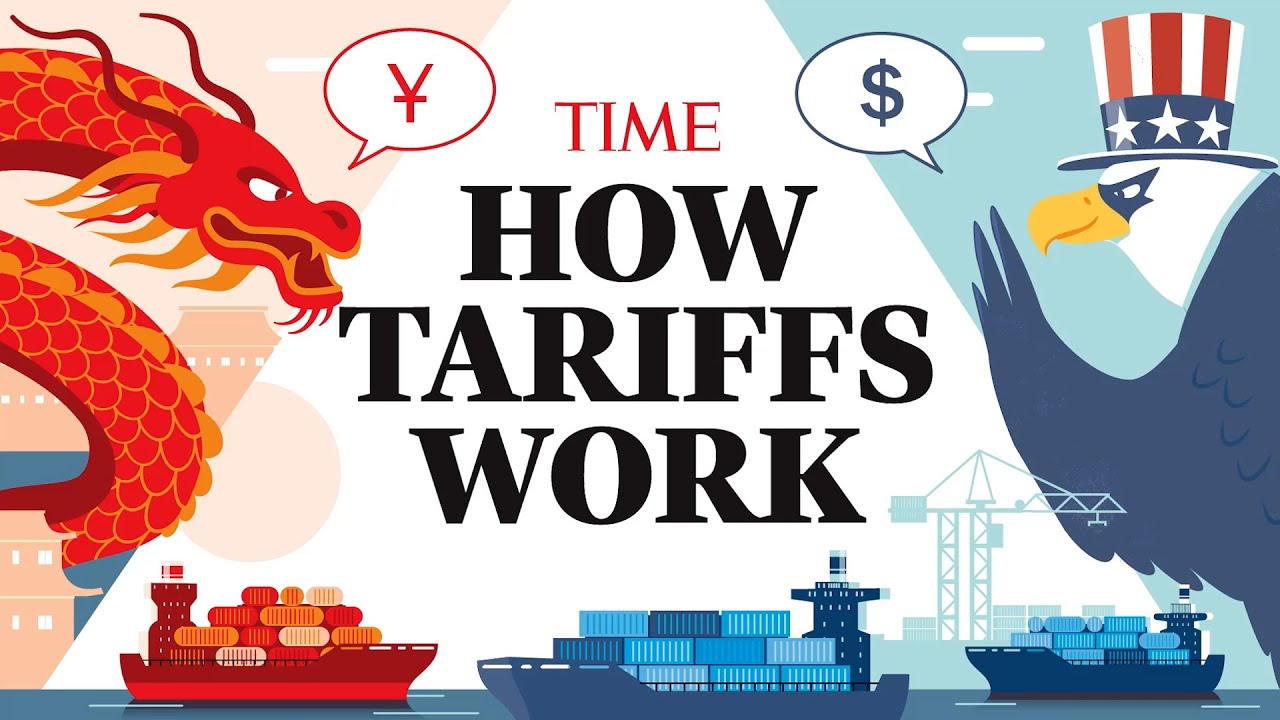
Introduction
Tariffs Tax have become a central topic in global trade discussions, especially under the administration of U.S. President Donald Trump. These taxes on imported goods are reshaping international commerce, sparking debates on economic growth, consumer prices, and geopolitical relations. In this blog, we’ll break down what tariffs are, how they work, and why Trump has made them a cornerstone of his economic policy.
What Are Tariffs Tax?
Definition and Mechanics
A government-imposed tax on goods imported from another nation is known as a tariff. They are typically calculated as a percentage of the product’s value, though some may be fixed fees per unit (e.g., $100 per ton of steel).
- Example: A 10% tariff on a 1,000carmeansanadditional1,000carmeansanadditional100 tax at the border, raising the total cost to $1,100.
- Purpose: Governments use tariffs to protect domestic industries, generate revenue, or pressure other nations into trade concessions.
Historical Context
- Early U.S. Reliance: Before income taxes (pre-1913), tariffs were the federal government’s primary revenue source.
- Decline: Post-World War II, global trade agreements (like NAFTA and WTO) reduced tariffs to promote free trade.
- Resurgence: Trump’s policies have reversed this trend, pushing U.S. tariffs to their highest levels since the 1930s.
The primary purposes of tariffs include:
- Protecting Domestic Industries: By making imported goods more expensive, tariffs encourage consumers to buy domestically produced products, supporting local businesses.
- Creating Government Revenue: Governments may be able to make money through tariffs.
- Reducing Trade Imbalances: By deterring imports, tariffs can help a nation’s trade deficit.
- Responding to Unfair Trade Practices: Tariffs may be imposed to counteract subsidies or dumping by foreign governments.
Historically, the United States relied heavily on tariffs for revenue, especially before the introduction of income taxes.
Why Is Trump Using Tariffs?
1. Protecting U.S. Jobs and Industries
Trump argues that tariffs tax shield American manufacturing from foreign competition, particularly from China and other low-cost producers. His administration claims that unfair trade practices—such as intellectual property theft and currency manipulation—have eroded U.S. industrial capacity.
- Steel & Aluminum: A 25% tariff on these metals aims to revive domestic production.
- Auto Industry: New 25% tariffs on imported cars and parts seek to incentivize U.S.-based manufacturing.
2. Reducing the Trade Deficit
The U.S. runs a massive trade deficit—importing more than it exports. Trump sees this as a sign of economic weakness and believes tariffs will force other nations to buy more American goods.
- China Trade War: The U.S. imposed up to 145% tariffs on Chinese imports, while China retaliated with 125% tariffs on U.S. goods.
- Goal: Narrow the $295 billion trade gap with China.
3. National Security Concerns
Trump has declared trade deficits a “national emergency”, citing reliance on foreign supply chains for critical goods (e.g., pharmaceuticals, microchips) as a security risk.
- Fentanyl Crisis: Tariffs on Mexico and Canada aim to curb drug trafficking.
- Tech & Defense: Higher tariffs on semiconductors and rare minerals aim to reduce dependence on China.
4. Political Leverage
Tariffs serve as a bargaining tool to force trade concessions.
- Mexico & Canada: Threatened auto tariffs led to renegotiations of the USMCA trade deal.
- EU & India: The U.S. demands lower tariffs on American exports (e.g., cars face 10% EU tariffs vs. 2.5% U.S. rates).
In his second term, President Trump has significantly increased the use of tariffs as part of his “America First” agenda. His administration has imposed tariffs on a wide range of goods from major trading partners, including South Korean, China, Canada, and Mexico.
Key Tariff Actions:
- China: Tariffs on Chinese imports have been raised to as high as 145%, targeting various sectors including technology and manufacturing.
- Canada and Mexico: A 25% tariff has been imposed on most goods from these countries, with a 10% tariff specifically on Canadian energy imports.
- Steel and Aluminum: A 25% tariff on all steel and aluminum imports aims to bolster domestic production.
These measures have led to retaliatory tariffs from affected countries, escalating trade tensions.
Economic Impact of Trump’s Tariffs Tax
Positive Effects (According to the Trump Administration)
- Revenue Generation: Projected to raise $5.2 trillion over 10 years.
- Reshoring Jobs: Some manufacturers (e.g., steel plants) have expanded U.S. operations 5.
Negative Consequences (Critics’ View)
- Higher Consumer Prices:
- Cars could cost 4,000–4,000–15,000 more due to tariffs on imports and parts.
- Everyday goods (electronics, clothing) may also rise in price.
- Global Economic Slowdown:
- The IMF cut global growth forecasts, predicting a U.S. recession risk.
- Stock markets have seen increased volatility.
- Retaliation:
- China, EU, and Canada have imposed counter-tariffs, hurting U.S. farmers and exporters.
Rationale Behind the Tariffs Tax
President Trump’s administration cites several reasons for the implementation of these tariffs:
- Protecting National Security: Tariffs on steel and aluminum are justified under national security concerns, aiming to ensure the U.S. maintains critical manufacturing capabilities.
- Combating Illegal Activities: Tariffs on Mexico and China are partly aimed at pressuring these countries to take action against illegal immigration and drug trafficking, particularly the flow of fentanyl into the U.S.
- Reducing Trade Deficits: By making imports more expensive, the administration hopes to encourage domestic consumption and reduce the trade deficit.
- Encouraging Domestic Manufacturing: Higher tariffs are intended to incentivize companies to produce goods within the United States, potentially leading to job creation.
Economic Impact
The implementation of these tariffs has had significant economic repercussions:
- Market Volatility: The stock market has experienced fluctuations due to uncertainty surrounding trade policies.
- Increased Consumer Prices: Tariffs often lead to higher prices for consumers, as importers pass on the additional costs.
- Supply Chain Disruptions: Businesses reliant on imported goods face challenges in sourcing materials, leading to potential delays and increased costs.
Retaliatory Measures: BBC news say that Countries affected by U.S. tariffs have imposed their own tariffs on American goods, impacting U.S. exporters.
Conclusion: A Double-Edged Sword
Trump’s aggressive tariff strategy reflects his “America First” ideology, aiming to revive domestic industries and reduce trade imbalances. However, the policy carries risks—higher costs for consumers, strained international relations, and potential economic downturns.
Whether tariffs will achieve their long-term goals remains uncertain, but their immediate impact is undeniable: they are reshaping global trade as we know it.
Tariffs are a powerful tool in international trade policy, capable of protecting domestic industries and addressing trade imbalances. However, their implementation can lead to unintended consequences, including higher consumer prices and strained international relations. As President Trump’s administration continues to utilize tariffs as a central component of its economic strategy, the long-term effects on the U.S. and global economy remain to be seen.





